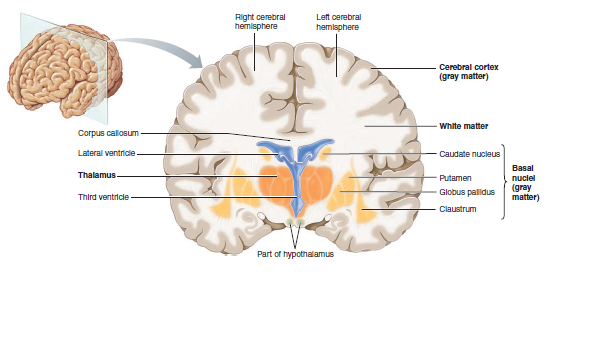
Contributions of the Cerebellum and Basal Ganglia to Overall Motor Control
Aside from the areas in the cerebral cortex that stimulate muscle contraction, two other brain structures are also essential for normal motor function: the cerebellum and the basal ganglia. Neither of these structures can control muscle function by itself. Instead, these structures always function in association with other systems of motor control.
The cerebellum plays major roles in the timing of motor activities and in rapid, smooth progression from one muscle movement to the next. It also helps control the intensity of muscle contraction when the muscle load changes and controls the necessary instantaneous interplay between agonist and antagonist muscle groups.
The basal ganglia help plan and control complex patterns of muscle movement. They control relative intensities of the separate movements, directions of movements, and sequencing of multiple successive and parallel movements to achieve specific complicated motor goals. This chapter explains the basic functions of the cerebellum and basal ganglia and discusses the overall brain mechanisms for achieving intricate coordination of total motor activity.
At the end of this lesson, students will be able to learn about;
- The Cerebellum and its Motor Functions
- Functional Unit of the Cerebellar Cortex—The Purkinje and Deep Nuclear Cells
- FUNCTION OF THE CEREBELLUM IN OVERALL MOTOR CONTROL
- Clinical Syndromes Resulting From Damage to the Cerrebellum
- THE BASAL GANGLIA AND THEIR MOTOR FUNCTIONS
- NEURONAL CIRCUITRY OF THE BASAL GANGLIA
- FUNCTIONS OF SPECIFIC NEUROTRANSMITTER SUBSTANCES IN THE BASAL GANGLIAL SYSTEM
- Clinical Syndromes Resulting From Damage to the Basal Ganglia


